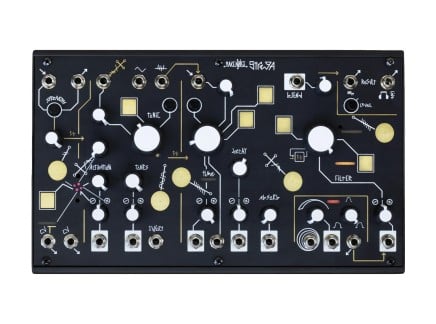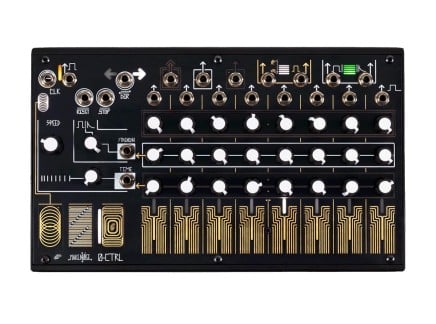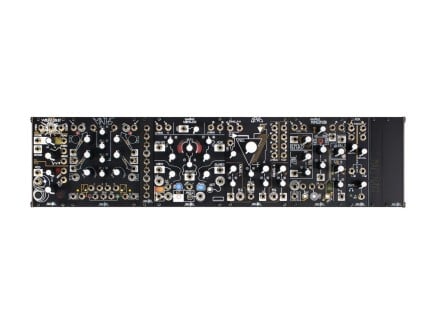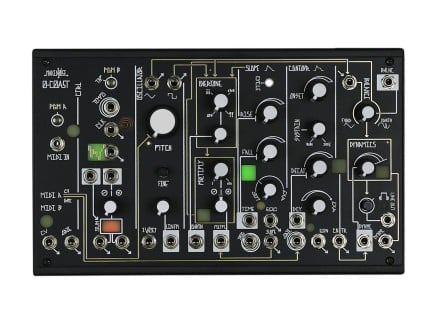Emerging from a shroud of mystery, Make Noise today introduced Strega: an alchemical synthesis experiment developed in collaboration with synthesist Alessandro Cortini. We've spent weeks taking blind guesses at what Strega could be. With close-up teaser images and video from Cortini's Instagram and Youtube accounts and more recent posts from Make Noise themselves, we had surmised that it was likely a standalone device in 0-Coast/0-CTRL format...however, all the guesses in the world couldn't have prepared us for the reality that Strega is far more peculiar and mysterious than we imagined.
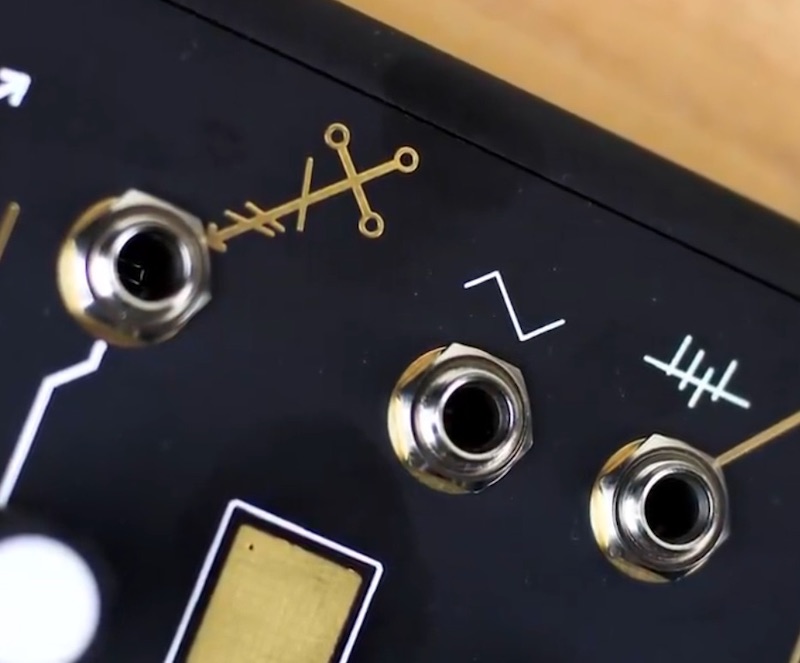
Many had guessed it would be a standalone effect processor...and many had guessed it would be a drone synth to complement the 0-Coast. In the end, both sides were more or less right: Strega is a synthesizer that goes from very light and distant tones to huge, heavy drones, featuring a built-in delay-like "Time / Filter Experiment" which adds nostalgic warbling echoes, tape-like hiss, and filtering. And while these qualities are familiar to those who know Cortini's music, Strega isn't an automatic "make me sound like Alessandro Cortini" machine—like Make Noise's other instruments, it is a vast world unto its own, one that will reward playful experimentation with a unique universe of sounds and interactions.
So we should make another thing clear right out of the gate: Strega is far from another "West Coast"-style synthesis offering. While Cortini is well-known for his use of rare Buchla instruments, and while Make Noise is well-known for their Buchla-inspired designs, Strega instead focuses on the core concept of alchemy and the sound of Cortini's music to provide a workflow and sound not available from Make Noise's prior offerings. Strega is not simply a 0-Coast alternative, nor another evolution of Make Noise's embrace of the "West Coast" spirit. Strega is murky, beautiful, expansive, wild, mysterious, noisy, and unlike anything else presently available.
Thoughts on Artist:Designer Collaboration
Around the release of Novation's limited edition AFX Station last year, some of my friends and I started a discussion about the idea of "signature" artist-endorsed synthesizers. It's a common theme in the guitar world to have "artist signature model" instruments: guitars that ship with specifications defined by a specific artist, aimed toward being an effective, general-purpose tool for making music in the way that they like to make it. Of course, this isn't as much of a trend in the electronic music world. It's common to see artist preset banks or sample packs, but frankly, designing a custom synthesizer from scratch is much more complex than swapping out pickups and paint job on a guitar—and as such, it requires a much deeper long-term relationship between the instrument maker and the artist. This type of collaboration is, in many cases, not a practical allocation of resources.
Now, Make Noise isn't calling Strega an Alessandro Cortini "signature instrument" per se, but they did collaborate closely with him on its development, gradually creating an instrument with a sonic character fairly distinct from their prior offerings. And while it has a distinctly Make Noise look and user interface, its sound and overall ethos have a clearly "Cortini" angle.
I often think of instrument design as a compositional endeavor: the limitations imposed by a designer have a significant impact on an instrument's musical potential, and as such, manufacturers working hand in hand with musicians they respect in order to develop an instrument makes a lot of sense. So naturally, understanding Strega can be assisted in part by understanding Alessandro Cortini's music—which you can check out here if you're not already familiar.
Why Alessandro Cortini?
I first became aware of Cortini's work through my fascination with Don Buchla's instruments some 12 or so years ago. Fascinated with weird electronic instruments, I had just become aware of Buchla through the music of Morton Subotnick, Charles Cohen, and others. Seeking to learn more about these rare and peculiar instruments, I stumbled across a video in which Alessandro Cortini discussed his relationship with the Buchla 200e and its involvement in the Nine Inch Nails album Ghosts. He came back onto my radar when a live performance of his piece "Everything Ends Here" cropped up on YouTube in 2011 (a surprising duo between Cortini and Don Buchla himself), and again in 2013 with the release of FORSE, a series of albums realized using the Buchla Music Easel as the sole sound source. Of course, he's been very visible in the synth world for the entirety of the last decade, and is never far from sight in discussions about experimental synthesizer music.
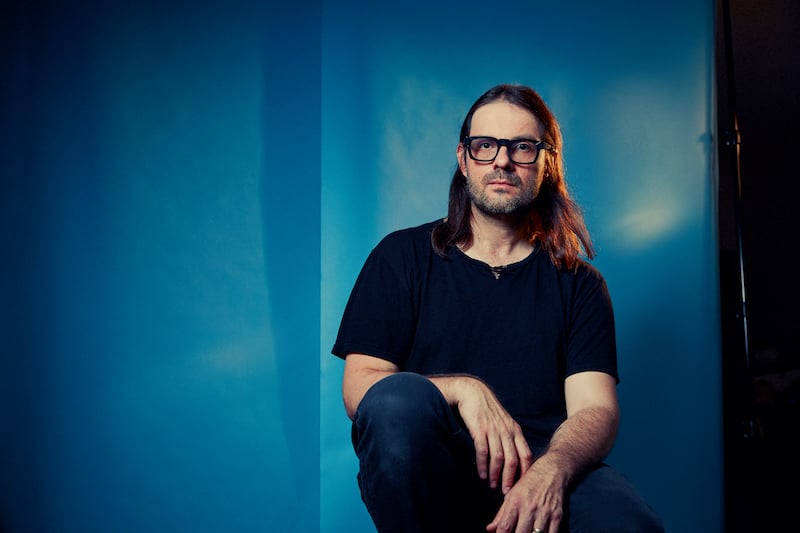
So, my awareness of Cortini was definitely shaped by his embrace of Buchla instruments. However, what slowly became apparent to me over the course of the years (and through several excellent video interviews, such as this one with Sonic State's Nick Batt) is that Alessandro's music is simply not about the typical West Coast sound. For many, the sound of Buchla instruments is about abstract textures, gestural sweeps of oddly organic, bongo-like tones, and a high degree of indeterminacy. These instruments lend themselves to music that embraces randomness, eschewing conventional rhythmic and melodic structures. Music like that can, of course, be difficult to form an emotional connection with—and as such, much of the music made with these instruments remains in relative obscurity.
Cortini consistently proves that music is about much more than the tools that make it. Though many of his typical tools (Buchla, EMS, et al.) are known for their wild unpredictability and their association with abstract music, Cortini has a vast catalog of music that feels deeply human and relatable. Rather than using these bizarre old instruments for extreme, chaotic sounds, he instead coaxes out beautiful and nuanced tones that exploit the instruments' instability through subtly wavering pitches, drifting harmonies, and an embrace of their excessive noise and functional quirks. The result is far from unapproachable: instead, his music feels deeply nostalgic and personal, like a series of emotional memories which unravel into an ecstatic combination of melancholy and warmth. It is easy for a musician's sound to be defined by their tools...but through all of the hiss and warble of TASCAM Portastudios, the colorful grit of the EMS Synthi, and the individual imperfections of countless other devices, Cortini's sound and musical sensibilities are always clear. Whether he's using a relatively cheap old monosynth or a tape machine or a rare Buchla piece, his sound and vision remain intact.
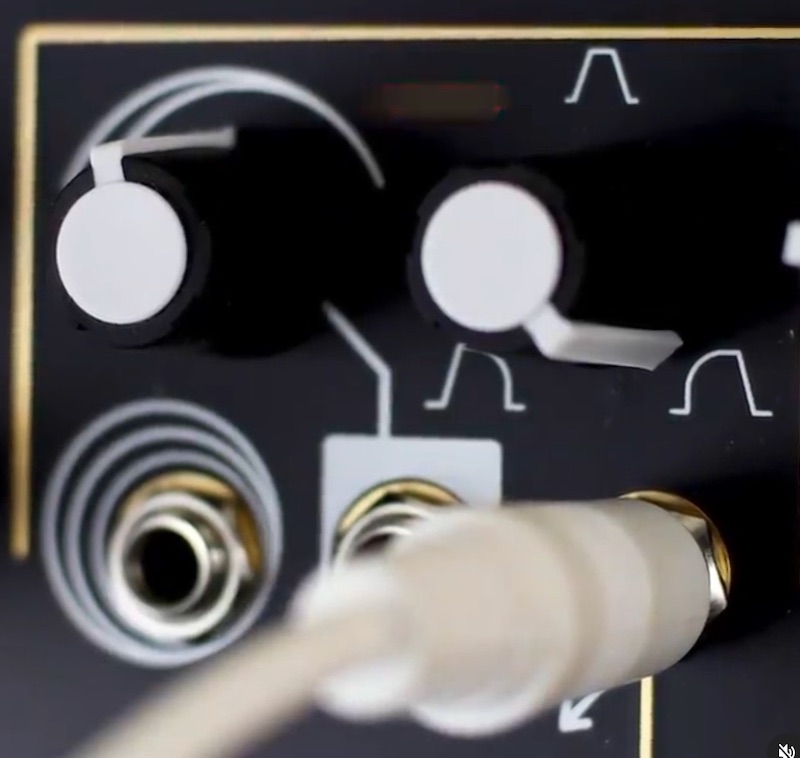 Strega's Agitation Function Generator
Strega's Agitation Function Generator
So what ingredients do you need for the Alessandro Cortini sound? Hiss. Distortion. Warble. Long, evolving tones with a rich, slowly shifting spectral energy. A huge dynamic range...and of course, a patient sensibility in carefully guiding how all of these elements relate to one another. And while the point of an instrument like Strega isn't to imitate an artist you love, it can be an incredible way to engage with the sounds and ideas that they value in your own personal way. And while you'll no doubt be able to evoke Cortini-esque tones from it, perhaps it is better seen as a way for a thoughtful musician and a thoughtful instrument designer to provide you an alternative means of finding your own musical vocabulary, and a way to find inspiration through interacting with a peculiarly organic, lively machine.
So What is Strega?
Strega is a standalone semi-modular instrument with the same form factor as Make Noise's 0-Coast and 0-CTRL. It can work entirely by itself, but also pairs excellently with the 0-CTRL as a sequencer/keyboard, and can also process external sounds. Its graphics and layout are distinctly Make Noise, but its overall sound has a special Cortini-style flavor lacking from their other instruments. Hiss, distortion, tape-like warble, murky echoes, huge evolving drones, and a subtle instability: it's all here.
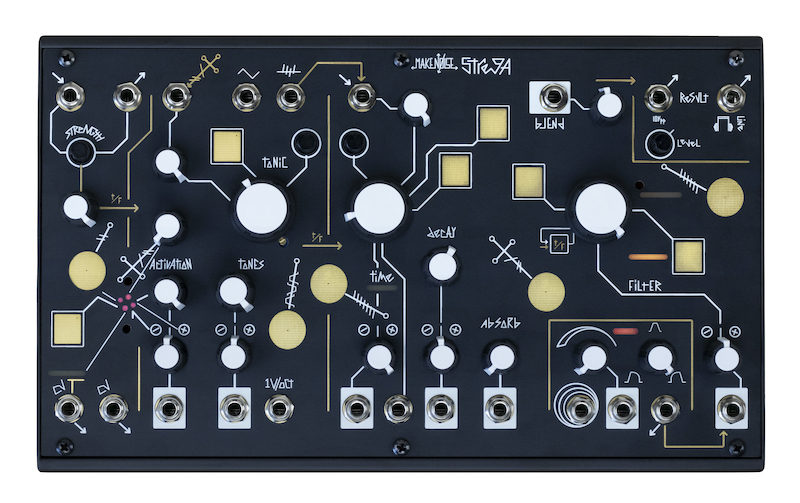
Make Noise refers to Strega as if it is as much a synthesizer as it is an alchemical experiment in sound, making equal use of science and magic to allow you to combine simple, common ingredients into something more than seems possible from its constituent parts. As such, it would feel odd to attempt to break it down and label it with traditional synthesis terms like "oscillator," "delay," "waveshaper," etc. Instead, Make Noise provides us more conceptual labels for understanding the functions of its various sections. While Activation, Time, t/F, Strength, Decay, and Absorb don't necessarily have any specific musical meanings, they provide an intuitive way of starting to grapple with how Strega works, and how you can start to use it to engage in your own sonic experiments.
So sure, on the surface Strega is a synthesizer: once you get to know it, it can certainly give you deep synth tones, drones, and leads. Once paired with a keyboard or sequencer (or a 0-CTRL) you can certainly use it like a conventional melodic synth. However, much of its magic lies in not knowing how it will behave, instead relying on intuition and a finely-tuned sense of listening to how your interactions play out sonically. "Strega," of course, is Italian for "witch," and this certainly colors our understanding of what it is and how it behaves. The name combined with its mysterious labeling and dark churning sounds tells us not to expect the average instrument here: as with prior Make Noise releases and as with Cortini's music, this instrument is deeply layered, nuanced, and enticing—it rewards extended explorations, and it will not quickly reveal all of its secrets.
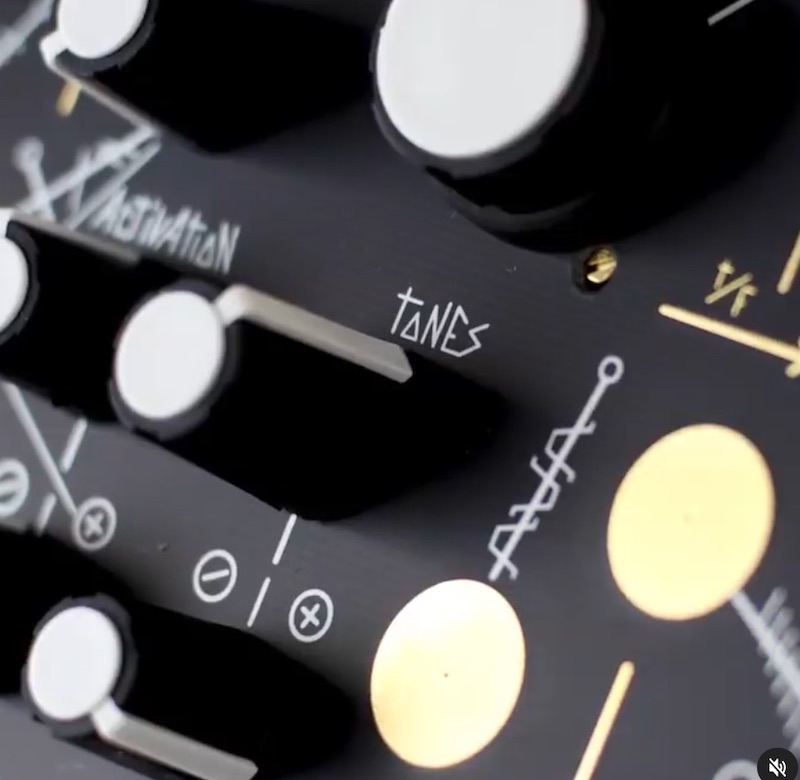 Tone & Activation controls from Strega's oscillator
Tone & Activation controls from Strega's oscillator
Strega's internal structure is broken up into three primary sections: a section for external input (complete with preamp and envelope follower), a section for internal sound generation, and a larger section referred to as the Time / Filter Experiment. These sections can be related to one another in a wide variety of ways—as with the 0-Coast, the instrument features a wide range of normalled signal connections to CV inputs, making it possible to access quite a wide range of tones without ever needing to plug in a single patch cable. These normalled connections range from typical audio signal routings to modulation connections from the internal Agitation Function Generator and a mysterious, hidden Interference circuit—a chaotic signal whose behavior changes seemingly based on the whole of Strega's current state.
The internal sound generator is an oscillator capable of everything from huge, colorful, multi-octave drones to quiet whistling triangle tones and unstable, chaotic oscillations. Whether you're creating dynamic meditative drones or harsh noise, it easily has your bases covered. By Activating the internal signal generator (with a dedicated knob, CV input, or the intermittent Interference signal), you allow its signal to pass through to the final output and into the other main section: the Time / Filter experiment. The Time / Filter Experiment is the core of the Strega's hissing, churning, undulating character: it is a processor and signal generator that takes the raw material from the Activated internal signal generator and/or from external sources and melds them together into a curious mixture of past and present tones, with parameters like Time, Decay, Absorb, and Filter defining how/what parts of a signal are allowed to persist over time. To call this section a "delay" is partly accurate, but needlessly reductive—the Time / Filter Experiment imparts not only a huge amount of sonic character, but also phantom tones, pulses, clicks, and hiss of its own, accounting for a huge amount of Strega's sonic identity. Strega also offers an Agitation Function Generator, a sort of variable-shape LFO/envelope used to apply dynamic fluctuations throughout Strega's signal path.
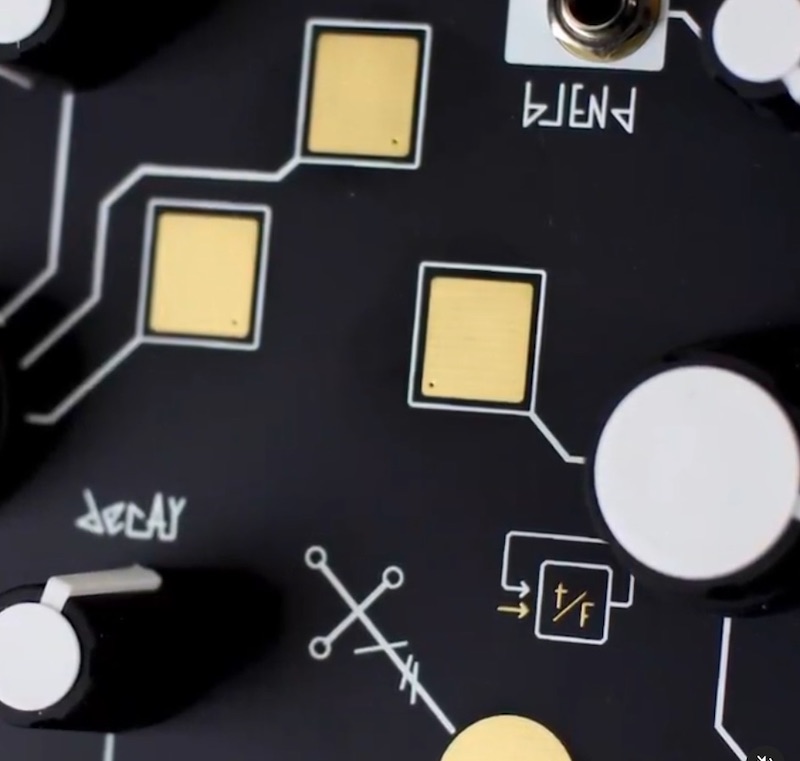
While you can interconnect all of these sections using patch cables, one of the other curious and striking aspects of its design manifests as a series of rectangular and circular touch plates on its surface: Touch Bridges and Gateways which allow the user to dynamically route signals throughout the instrument using their bodies as conductors. The nature of this interaction drives home some of the magical and mysterious aspects of Strega's design: by integrating your own body into the circuit, you add an organic interaction with the electronics, and a means by which the synthesizer signals can commingle with the Earth. Despite the fact that this approach to patching isn't unique (see Landscape's AllFlesh patching system, SOMA's Enner, Joker Nies's touch patching system for the Buchla Music Easel, or even Make Noise's own Teleplexer), I haven't seen this conceptually integrated into an instrument itself in such a pleasing and meaningful way. In Strega's world of hidden magic and lost primitive science, physically involving your body in the experimental/alchemical process feels natural and, in its own bizarre way, logical.
So Who is Strega For?
The idea of a collaboration between artist and electronic instrument maker is interesting, and honestly doesn't parallel the aforementioned idea of the "artist signature guitar" as closely as it might immediately seem. There's much more to designing a synthesizer than just deciding on scale length, pickup selection, and color: when you build a synthesizer from scratch, you need to consider every aspect of its existence. How does it sound? How does it achieve those sounds? How is it meant to be played? What potential connections are surfaced for the user? What aspects of the signal path are permanently fixed behind the panel?
Strega represents an uncommon effort toward collaboration, and the result is an uncommon and fascinating instrument. While it certainly can make many "Cortini-esque" sounds, it goes much further than that—and while it will no doubt attract some hardcore Cortini fans, I suspect it will also appeal to an even wider range of adventurous musicians looking for a unique way to interact with sound.
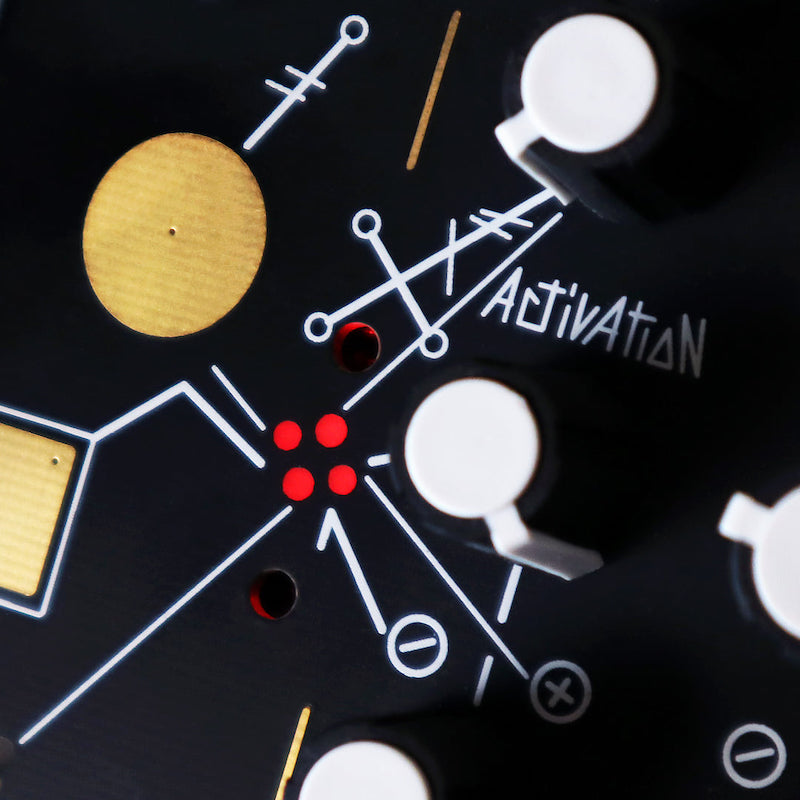
Aside from its vast, dark, and borderline lo-fi sound, there's something in Strega that speaks more deeply to Cortini's musical sensibilities. What makes Cortini's music so interesting is his skill as a listener—he notices the idiosyncrasies and peculiarities of any given instrument and allows those to steer him toward the music, leading to a fascinating and very human relationship between himself (the performer) and the instruments themselves. In a video interview with FACTmagazine (regarding the EMS Synthi AKS), Cortini said:
"So if anything would inspire me, it's the instrument itself . . . every time I sit in front of it, it always feels like a dialog, like I give it 50, I get back 50—or sometimes I give it 20, I get back 80."
Of course, this type of relationship requires the right pairing of instrument and musician. That said, I feel like part of synth designer Tony Rolando's (and Make Noise as a whole's) artistry lies in the ability to evoke this type of inspiration—to design instruments that directly present this sort of dialog between musician and machine. As with other Make Noise designs, Strega feels alive, playful, and ready to have a conversation. So if you're looking for a mystery—if you're looking for a machine which rewards careful listening and takes you unexpected directions, this is a singular and entirely welcome option.

